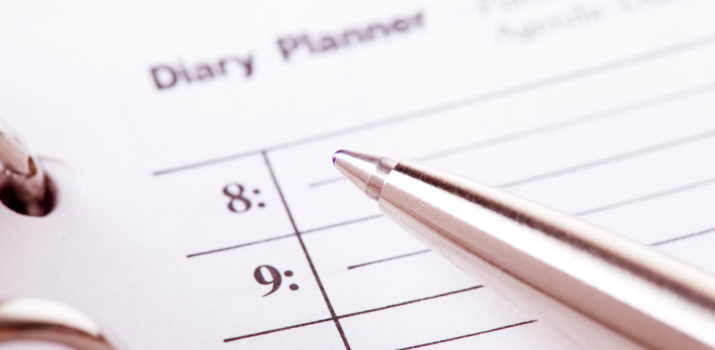Something’s not working, and it’s affecting your whole work day..
Your tasks are taking longer than they should, but despite the extra time nothing’s quite up to your standards. There’s no need to give up on your efforts though.
The problem is that you’re wasting time and money by using a bad daily workflow.
In my more than two years working with our remote team I’ve faced the many troubles that come with an inefficient workflow. I’m here today to tell you how to solve those problems by:
- Waking up early
- Ditching the morning coffee
- Prioritizing your tasks
- Taking regular breaks
- Tracking your time
- Automating what you can
Whether you’re brand new to content marketing or a veteran developer, your daily workflow is what gives you consistent productivity. It’s what lets you meet your deadlines and feel good about signing off after a hard day’s work.
It’s time to sort this out.
Wake up early
It’s pretty self-explanatory that the more hours in the day that you’re awake, the more time you’ll have to do what you want or have to. Many highly successful individuals such as Oprah Winfrey and Richard Branson wake up hours before they start work, but most don’t use it to power through an extra deadline or two.
The key is to use that extra time to do something other than work – relaxation is important if you want to be more productive during your work hours and leave your duties at sign off time.
Whether you spend time with your family, catch up on the news or do a little exercise (more on that in a bit), give yourself at least two hours to get into the swing of the day before truly starting work.
The first few times of doing this are always the hardest, but stick to it, and build a habit of waking up early. Once your habit’s set, it’ll be more difficult to break it than to keep going.
Eat breakfast (and drink water)
I’m as guilty as the next person for skipping breakfast, but as soon as I regularly started eating in the morning I found myself having the kickstart I needed to buckle down and produce some top notch work.
Get up, grab your breakfast of choice, and make sure that you drink a glass of water. Your body has just gone without water for around 7 hours – you’re going to need a top off if you don’t want a foggy brain.
A final note in terms of drinks that affect productivity– consider swapping out the coffee and tea for green tea. Blasphemy, I know (I love black coffee myself), but in terms of pure productivity green tea has the caffeine boost of coffee, but over a longer period and without the slump after it wears off.

Exercise
Along with all of the usual health benefits, exercise also increases your productivity. You’re essentially kickstarting your day with a rush of adrenaline, blasting away any remaining fogginess and upping your motivation to tackle the day ahead.
This is also another reason to get up earlier than usual – doing so gives you time to run, swim, climb, and generally break a sweat for a good half hour before sitting down to work.
If you’re stuck at a computer all day I’d particularly recommend checking out yoga. A quick morning session can really help to open up your posture and work the cricks out of your joints from the previous day’s work.
You might feel a little silly when just starting out, but it’s well worth the effort.
Prioritize your tasks the smart way
Hands-down one of the most effective ways I’ve found to boost my productivity by altering my daily workflow is by changing the way I prioritize tasks. Take a leaf out of Brian Tracy’s book and tackle the biggest, ugliest task you have as the first item of business.
Trying to clear your task list of the smaller items first thing doesn’t work. By the time you get to your main task, you’ll have spent a chunk of your most productive time on periphery tasks that don’t actually require attention.
Sort your task list into four categories:
- Things you don’t want to do, but need to do.
- Things you want to do and need to do.
- Things you want to do, but don’t need to do.
- Things you don’t want to do, and don’t need to do.
Once you have those lists, tackle them in roughly that order, starting with the biggest task that you don’t want to do but actually have to get done. Once you start chipping away, you’ll quickly find yourself settling into a groove, and when you’ve crossed it off your list you’ll feel much better than if you’d spent time clearing some of the peripheral clutter.

Take regular breaks to avoid burnout
You aren’t a robot, and you shouldn’t treat yourself as such. You need to be taking regular breaks to give yourself time to recover between sprints – this lets you keep up a steady pace for longer, and accomplish more every day.
Having said that, you don’t have to be incredibly strict with your breaks – if you’re following a particularly productive train of thought, it might be better to wait until you’ve finished typing to take a break instead of interrupting your flow and wasting a good stream of work.
The Pomodoro Technique is a good start for planning out your breaks, but doesn’t give the flexibility to adjust without wrecking your workflow. Instead of sticking to it exactly, I’d recommend using the “25 minutes of work, 5 minute break” framework as exactly that; a guideline. If you work for longer to stay in the zone, give yourself a sightly bigger break to balance things out.
Track your time to stop missing deadlines
Nothing beats procrastination like an impending deadline, but what do you do in the day-to-day situations where you don’t have a set time limit? Why, you track the time you’re spending on each task, of course.
Being aware of how much time you’re spending on your tasks is a fantastic way to keep yourself focused – especially if the rest of your team can see those stats too.
For example, Pomello integrates with your Trello board to leave up-to-date accounts of how much time you’ve spent on a task, and when you worked on it. In turn, if the rest of your team can access your board then you’re more likely to work on what you need to be doing and not dilly dally.
After all, you don’t want your teammates asking why “email our CEO to confirm the meeting” took you 7 hours.
Automate what you can
So far I’ve mostly given tips which can help improve not just your daily workflow, but your productivity in general. However, what if I told you that instead of increasing your efficiency, you could automatically take care of a chunk of your workload instead?
Services like Zapier and IFTTT let you automate your processes, meaning you can set an “Action” to occur if a “Trigger” is detected. For example, you could automatically save email attachments you receive to a Google Drive folder.
The easiest way to get started with automations is to use IFTTT’s mobile apps (such as Do Button and Do Note). These can be installed on Android and iOS devices, and perform simple actions (press the button to perform an action, create a note, etc).
Take back your day
Your daily workflow doesn’t have to be a drag – with these 7 tips, a little creativity, and a little customization to what works best for you, you can whip your daily workflow into shape and focus on the tasks that actually need doing.
This is a guest post written by Benjamin Brandall, a content creator at Process Street.

